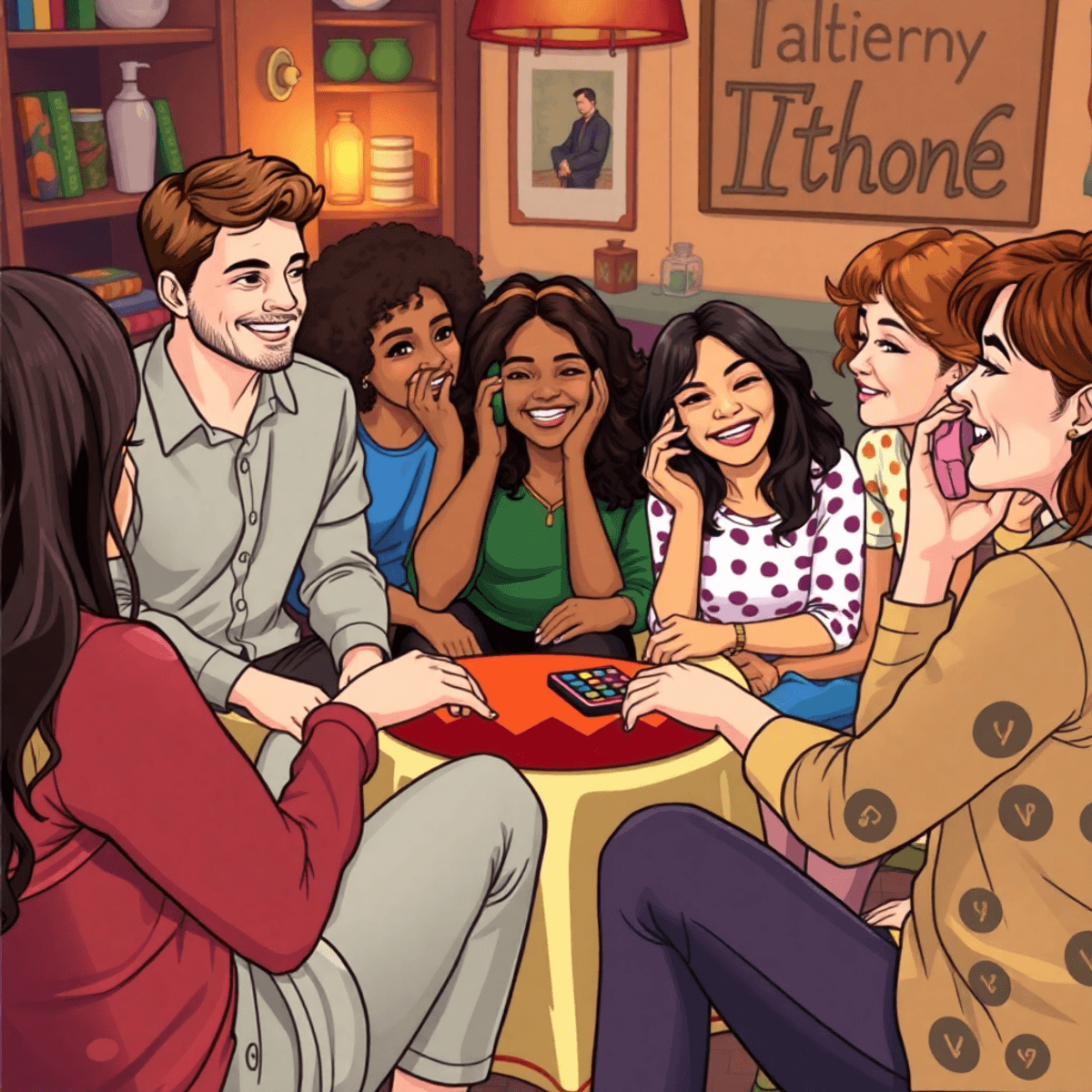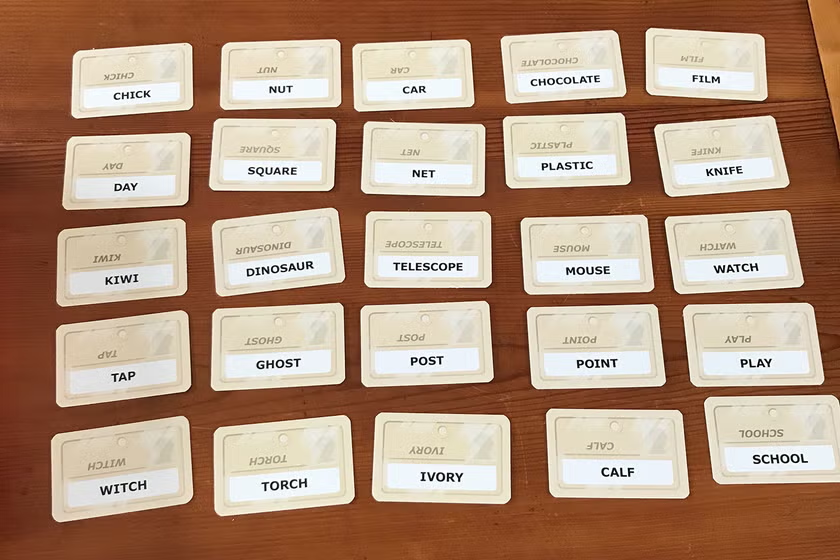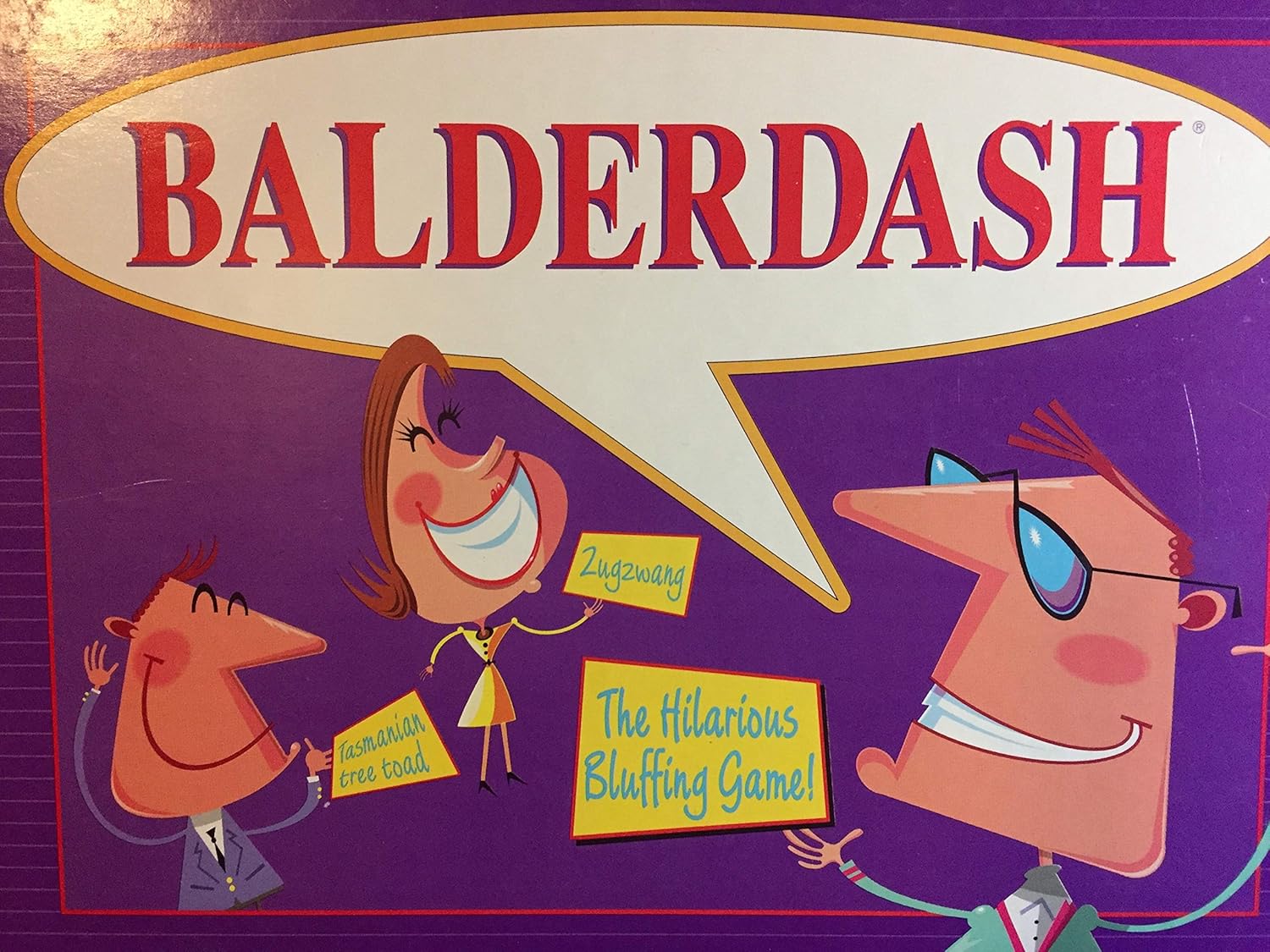
Board games have been a part of human society for thousands of years, connecting different generations, cultures, and communities. From ancient Egyptian senet boards carved in stone to modern party games played in living rooms worldwide, these games are more than just entertainment—they offer a glimpse into our social development.
The evolution of social board games from simple hobbies to complex social activities shows humanity’s ongoing desire for connection and interaction. Social and party board games, in particular, have become powerful tools for bringing people together, nurturing relationships, and creating shared experiences.
Exploring the history of these games provides intriguing insights about:
- How societies have evolved in their approach to entertainment
- The changing dynamics of social interaction
- The role of play in building communities
- The impact of cultural shifts on game design
These games have influenced social gatherings for many years, teaching important skills while providing enjoyment. They have adjusted to fit the times, embracing new technologies and social norms while still being appealing: the happiness of face-to-face interaction.
As we explore the fascinating past and ongoing development of social board games, we discover not only the tale of games but also the narrative of human connection itself—a story that continues to unfold with each new generation of players.
Origins of Board Games
The discovery of ancient board games in Egyptian tombs reveals a fascinating glimpse into early human civilization. Senet, dating back to 3500 BCE, stands as one of humanity’s oldest known board games. This two-player race game featured intricate hieroglyphic markings and held deep religious significance, symbolizing the journey through the afterlife.
The Social Importance of Early Board Games
Archaeological findings showcase the social importance of these early games:
- Royal Game of Ur (2600 BCE) – Discovered in Iraq’s Royal Cemetery of Ur, this racing game spread across the ancient world
- Mehen – A spiral-shaped Egyptian board game depicting a coiled snake
- Hounds and Jackals – A race game popular among Egyptian nobility
The Influence of Different Civilizations on Board Games
The spread of board games across civilizations created diverse gaming traditions. Roman latrunculi, a military strategy game, reflected the empire’s martial culture. Players commanded armies of glass pieces across gridded boards, capturing opponents through tactical maneuvers.
Indian culture contributed significantly through chaturanga, the predecessor of modern chess. This four-player war simulation incorporated elements of Indian military strategy:
- Infantry (pawns)
- Cavalry (knights)
- Elephants (bishops)
- Chariots (rooks)
The game’s evolution through Persian and Arabic cultures transformed it into shatranj, before reaching medieval Europe as chess. Each civilization added unique elements, reflecting their cultural values and social structures.
The Multifunctional Role of Board Games in Society
Archaeological evidence suggests these games served multiple purposes:
- Social entertainment
- Military strategy training
- Religious ceremonies
- Educational tools
- Status symbols among nobility
The sophisticated design of ancient game boards, often crafted from precious materials, highlights their significance in early societies. These artifacts demonstrate how board games functioned as both recreational activities and important cultural touchstones.
Transition from Parlor Games to Modern Social Games
During the Victorian era, a unique form of entertainment called parlor games emerged. These games were specifically created for small gatherings in the formal living rooms of middle and upper-class homes. Parlor games had certain features that set them apart:
- Social Etiquette: Activities that taught and reinforced proper behavior and manners
- Intellectual Stimulation: Word games, charades, and riddles that showcased wit and education
- Limited Physical Movement: Games that could be played while dressed formally and in confined spaces
- Gender-Appropriate Activities: Different games designed for ladies and gentlemen
The Shift to Modern Social Games
The transition from parlor games to modern social games reflected larger changes in society. The strict social structures of the Victorian era gradually gave way to more relaxed social interactions in the 20th century. This shift brought new features to board games:
- Mixed-Gender Play: Games designed for all participants regardless of gender
- Casual Settings: Activities suited for various locations and informal gatherings
- Group Dynamics: Focus on team building and collective problem-solving
- Social Deduction: Introduction of hidden roles and psychological elements
The Impact of Party Games
The 1950s and 1960s marked a significant turning point with the rise of party games like Scrabble and Twister. These games prioritized social interaction over strict rule adherence, encouraging:
- Physical movement and proximity between players
- Spontaneous laughter and entertainment
- Flexible player counts to accommodate different group sizes
- Simple rules that allowed quick start-up and engagement

Modern Party Games
Modern party games built upon these foundations, incorporating elements of storytelling, creativity, and social deduction. Games like Pictionary and Trivial Pursuit transformed living rooms into spaces of collaborative entertainment, where winning became secondary to the shared experience of play.
The Role of Cultural Trends
Cultural shifts have dramatically shaped board game design throughout history, reflecting society’s evolving values and interests. The Victorian era introduced games with strong moral undertones, designed to instill virtuous behavior in children. The Mansion of Happiness (1843) stands as a prime example, where players navigated a path of virtues and vices.
The post-World War II period marked a significant departure from these didactic approaches. The rising middle class and suburban lifestyle created demand for entertainment that brought families together. Games like Scrabble (1948) emphasized intellectual stimulation while maintaining social engagement.
The social revolution of the 1960s and 70s inspired games that challenged traditional norms:
- Party Games: Titles like Twister (1966) broke social barriers through physical interaction
- Social Commentary: Games began addressing contemporary issues and cultural taboos
- Creative Expression: New designs encouraged personal expression and storytelling
The 1980s and 90s saw a surge in games reflecting growing cultural diversity and global awareness. Pictionary (1985) transcended language barriers, while Trivial Pursuit (1981) celebrated knowledge across various cultural domains.
Recent trends show increased focus on:
- Inclusive themes and representation
- Cooperative gameplay mechanics
- Complex social dynamics
- Cultural authenticity in game narratives
Modern game designers now prioritize accessibility and social connection, creating experiences that bridge generational and cultural gaps. This shift reflects broader societal movements toward inclusivity and shared experiences.
Evolution of Social Board Games
The world of social board games changed dramatically in the 1980s with the creation of Mafia by Dimitry Davidoff. This groundbreaking game introduced revolutionary mechanics that would shape the future of social deduction games:
- Hidden Roles: Players receive secret identities
- Day/Night Phases: Alternating rounds of public discussion and covert actions
- Group Decision Making: Collective voting to eliminate suspects
- Player Elimination: Progressive reduction of participants
Growth in the 1990s and 2000s
Social deduction games grew rapidly in the 1990s and 2000s, with titles like Werewolf adapting and refining these core mechanics. The genre’s success sparked innovation in game design, leading to sophisticated variations of the original formula.
Key gameplay elements that define modern social board games include:
- Social Deduction: Players gather information through observation and discussion
- Bluffing Mechanics: Strategic deception and misdirection
- Team Dynamics: Hidden alliances and shifting loyalties
- Variable Player Powers: Unique abilities that affect gameplay
Building on Existing Ideas
Games like The Resistance and Secret Hitler built upon these foundations by introducing mission-based objectives and government simulation mechanics. These innovations created deeper strategic layers while maintaining the core appeal of social interaction.
The Impact of Party Games
The rise of party games in the 2010s brought new dimensions to social gaming. Cards Against Humanity pioneered the judge-based card selection format, while Codenames introduced word association and team communication elements. These mechanics broadened the appeal of social games beyond traditional deduction-based formats.
Recent Trends
Recent developments have seen the integration of app-based components and hybrid gameplay elements, expanding the possibilities for social interaction in board gaming. Games like One Night Ultimate Werewolf use digital tools to streamline complex game mechanics while preserving the essential face-to-face social experience.
Popular Social Board Games Over Time
Social board games reflect the cultural spirit of their times, with each decade introducing new ideas in how we play and interact with others.
1950s: Clue (Cluedo)
The 1950s introduced Clue (Cluedo), reflecting post-war society’s fascination with mystery and deduction. Players assumed distinct social roles – from the mysterious Miss Scarlet to the scholarly Professor Plum – while navigating a wealthy estate to solve a murder.
1970s: Dungeons & Dragons
The 1970s saw the rise of Dungeons & Dragons, which changed social gaming forever by introducing collaborative storytelling and role-playing elements. This shift marked a move away from competitive gameplay toward shared narrative experiences.
Notable Social Games Through the Decades
- 1980s: Pictionary captured the essence of quick-thinking and creative expression, while Trivial Pursuit tapped into the quiz show culture
- 1990s: Taboo and Cranium emphasized verbal skills and multi-talent challenges
- 2000s: Pandemic introduced cooperative gameplay against a common threat
- 2010s: Codenames brought word association and team-based deduction to the forefront
Modern hits like Among Us (inspired by Mafia) and Secret Hitler demonstrate the enduring appeal of social deduction mechanics. These games incorporate complex psychological elements, requiring players to read social cues, negotiate alliances, and manage group dynamics.
The success of party games like Cards Against Humanity reflects contemporary attitudes toward humor and social commentary, while Jackbox Games seamlessly blends digital technology with traditional party game elements.
Impact of Social Board Games on Society
Social board games are more than just a source of entertainment; they play a significant role in building communities and fostering personal growth. Studies have shown that regularly playing board games together can strengthen relationships and create lasting connections among players, regardless of their age, culture, or socioeconomic background.
How Social Board Games Benefit Players
These games offer a unique social setting where players can:
- Practice active listening and empathy
- Develop negotiation skills
- Learn to interpret non-verbal signals
- Build trust through working together
The Cognitive Benefits of Social Board Gaming
The psychological advantages of playing board games with others go beyond mere fun. Research indicates that games involving strategic thinking and social deduction engage various mental processes:
Critical Thinking Skills Developed Through Board Games
- Recognizing patterns
- Using logical reasoning
- Making decisions under pressure
- Assessing risks
Social Skills Enhanced by Playing Together
- Resolving conflicts
- Developing leadership abilities
- Coordinating as a team
- Understanding emotions better
Creating Safe Spaces for Social Interaction
Board games provide an environment where individuals can practice complex social interactions without fear of judgment. In professional settings, organizations employ social board games as team-building activities, acknowledging their effectiveness in cultivating cooperative skills and enhancing group dynamics.
Impact on Education
Schools have incorporated social board games into their teaching methods, observing notable improvements in students’:
- Problem-solving capabilities
- Communication proficiency
- Ability to adapt to different situations
- Confidence in social settings
Fostering Community Connections
The emergence of board game cafes and specialized gaming venues highlights the role these games play in establishing community gathering places. Such locations encourage face-to-face interactions in an increasingly digital era, offering opportunities for genuine social connections and shared experiences.
Therapeutic Applications of Board Games
Mental health professionals acknowledge the value of social board games as effective tools for support groups and family therapy sessions. These games are used to promote communication and emotional expression in structured yet enjoyable ways.
Digital Transformation and Modern Adaptations
The digital age has transformed traditional board gaming, giving rise to hybrid experiences that seamlessly combine physical and virtual elements. Timeless favorites such as Monopoly, Scrabble, and Risk have made their way into the digital realm as mobile applications and online platforms, enabling players to connect regardless of their geographical locations.

The Rise of Virtual Tabletop Platforms
Virtual tabletop platforms like Tabletopia and Board Game Arena have emerged as popular destinations for board game enthusiasts. These platforms offer a wide selection of licensed board games, complete with automated rule enforcement and matchmaking systems. Here’s how these digital adaptations have benefited the gaming community:
- Lowered entry barriers for new players through interactive tutorials
- Created opportunities for asynchronous gameplay
- Enabled real-time translation features for international gaming sessions
- Preserved game mechanics while eliminating setup time and physical storage needs
The Impact of COVID-19 on Digital Transformation
The COVID-19 pandemic acted as a catalyst for this digital transformation. During lockdowns, people turned to online gaming as a means of social interaction. Platforms like Jackbox Games and Among Us showcased the potential for social deduction games to thrive in virtual environments.
As a result, game developers are now designing board games with both physical and digital versions in mind. They are incorporating innovative elements such as QR codes, companion apps, and augmented reality features to enhance the overall gaming experience.
Preserving Classics Through Digital Adaptations
Digital adaptations have not only opened up new avenues for gameplay but also played a crucial role in preserving beloved classic board games. These adaptations serve as living archives, ensuring that these cultural treasures remain accessible to future generations.
Conclusion
Social and party board games have a bright future ahead. With the introduction of augmented reality, artificial intelligence, and new physical components, these games are set to offer unique experiences that blend digital and analog play.
These games continue to captivate new generations by tapping into fundamental human desires for connection, competition, and shared experiences. The enduring appeal lies in their ability to:
- Create meaningful face-to-face interactions
- Foster strategic thinking and creativity
- Build lasting memories through shared experiences
- Adapt to changing social dynamics
The popularity of board games shows no signs of slowing down. Game designers are pushing boundaries with hybrid experiences that combine traditional elements with cutting-edge technology. This evolution reflects our society’s growing appreciation for authentic social connections in an increasingly digital world.
The future of social board gaming looks bright, driven by passionate communities, innovative creators, and the timeless human need to gather, play, and connect.





